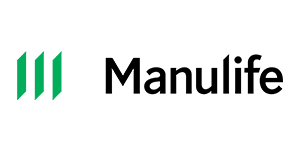Laser eye surgery has come a long way in recent years, both in terms of effectiveness and cost. Now more than ever, laser eye surgery should be on your radar—not just for yourself but for your employees.
Offering comprehensive group benefits is one of the best ways to attract and keep top talent, and that includes vision coverage. Laser eye surgery cost can vary widely between surgery types, as well as by clinic and province, but is generally on the pricy side to pay for out of pocket. Here’s a quick overview of the cost of laser eye surgery in Canada, along with coverage options you might consider adding to your benefits package.
Laser Eye Correction Procedures
LASIK surgery isn’t the only game in town when it comes to laser vision correction—there are other options. For the most part, though, prices are similar. Laser eye surgery procedures can cost as low as $500 per eye, but the median advertised price tends to fall closer to $2,000 per eye. Keep in mind that total end costs can vary from this initial estimate.
LASIK
LASIK eye surgery is a complicated procedure using lasers and other advanced technology to make minute adjustments to the eye. Since LASIK has been around for a while, there are a few procedure variants. LASIK surgery using older technology (such as using a blade to cut the cornea of the eye instead of a laser) can cost less but may be less precise.
Custom LASIK, for example, can use Wavefront technology to map the inside of the patient’s eye better. This allows the surgeon controlling the excimer laser to be more precise than with standard LASIK.
Typically, the most current LASIK procedures cost more than $1,000 per eye, though this price can increase based on a variety of potential factors, including:
- The amount of vision correction needed
- The technology used in the procedure
- Inclusion of pre-operative consults and post-operative visits
- Limited-time offers and specials
PRK
PRK is a very similar procedure to LASIK, but the healing process is slightly different. During the LASIK procedure, the surgeon cuts a flap away from the outside of the eye, then replaces it and allows it to heal when the procedure is over.
On the other hand, during PRK surgery, the surgeon cuts a portion of the outer eye away permanently— just enough to effectively reshape the cornea itself—before using the laser to reshape the inner eye. Eventually, the outside of the eye will recover and heal the lost portion of the cornea.
PRK recovery takes longer than LASIK. While both procedures require several months to heal fully, those who receive LASIK will start to see results in a matter of days.
SMILE
SMILE laser surgery, or Small Incision Lenticule Extraction, is a relatively new procedure designed to correct nearsightedness. During this procedure, the surgeon uses a laser to isolate a lens-shaped portion of tissue, then removes it through a small incision in the cornea.
This short and simple procedure is similar to LASIK, but because the surgeon does not cut a full corneal flap, the recovery process is even faster and easier. However, SMILE can’t be used to correct farsightedness or astigmatism.
SMILE has several other noticeable advantages over PRK and LASIK for those who are eligible, but unfortunately, it does have some restrictions. For example, as an emerging procedure (and one dependent on the Carl Zeiss VisuMax laser), it is slightly more expensive than LASIK, usually starting at around $2,500 to $3,000 per eye.
Even so, this extra cost may be worth it for some, especially with the other advantages that SMILE provides. Dry eye, one of the most common side effects of PRK and LASIK, is much less prevalent with SMILE procedures, for example. It is also a better option than LASIK for those who have trouble tolerating contact lenses or have thin corneas.
Refractive Lens Exchange
Refractive Lens Exchange (RLE) is a slightly different eye surgery procedure that involves swapping out the eye’s natural lens for an artificial one. These artificial lenses are designed to correct vision issues that LASIK, PRK, and SMILE can’t fix, especially problems with extreme farsightedness.
During the RLE procedure, the surgeon cuts into the patient’s cornea (often using a powerful laser) and implants a special lens. This lens reduces the need for reading glasses and contact lenses for up-close focusing. Additionally, if both eyes need surgery, they are done one at a time, with a short time allowed for recovery in-between visits.
Lenses designed for correcting nearsightedness exist as well—called Phakic IOLs—but they are less common because LASIK, PRK, and SMILE can produce the same results. As such, most refractive lens exchange procedures correct farsightedness instead.
The IOL (intraocular lens) implanted in the eye is uniquely designed for each patient. Each type is designed to fix a different type of refractive error. These types include:
- Monofocal fixed IOLs to correct vision at a single distance
- Multifocal IOLs to correct vision at multiple distances
- Accommodating IOLs to correct vision at multiple distances by shifting within the eye
Because RLE is done with an artificial lens instead of reshaping the eye itself via laser technology, there is little to no risk of long-term degradation or reversion of the procedure. However, RLE does have its own list of potential side effects, such as unintended movement of the lens.
Employee Benefits: All You Need to Know
From Legislated Benefits To The Perks That Your Employees Are Looking For Today, This Article Explains It All!
Decreased Laser Eye Surgery Costs Through HCSA
Government health care plans are unlikely to cover the laser eye surgery cost of most procedures in Canada. As such, vision insurance is the way to go if your employees need glasses, contact lenses, or other forms of specialized eye care. Whether you just need extended health care coverage or group benefits for all your employees, at Group Enroll, we have the resources and connections to find you what you need.
Through our partners, we’ve helped countless businesses find low-cost comprehensive Extended Health Care plans for their workforces, as well as additional potential coverage options through our Health Care Spending Account programs. Our specialists can find you highly customized quotes for the coverage options you want.
For more information, get in touch with our experts by emailing us at [email protected] or fill out our short quote form. Our offices are located at 10 Great Gulf Drive, Unit 5, Vaughan, ON, L4K 0K7.








